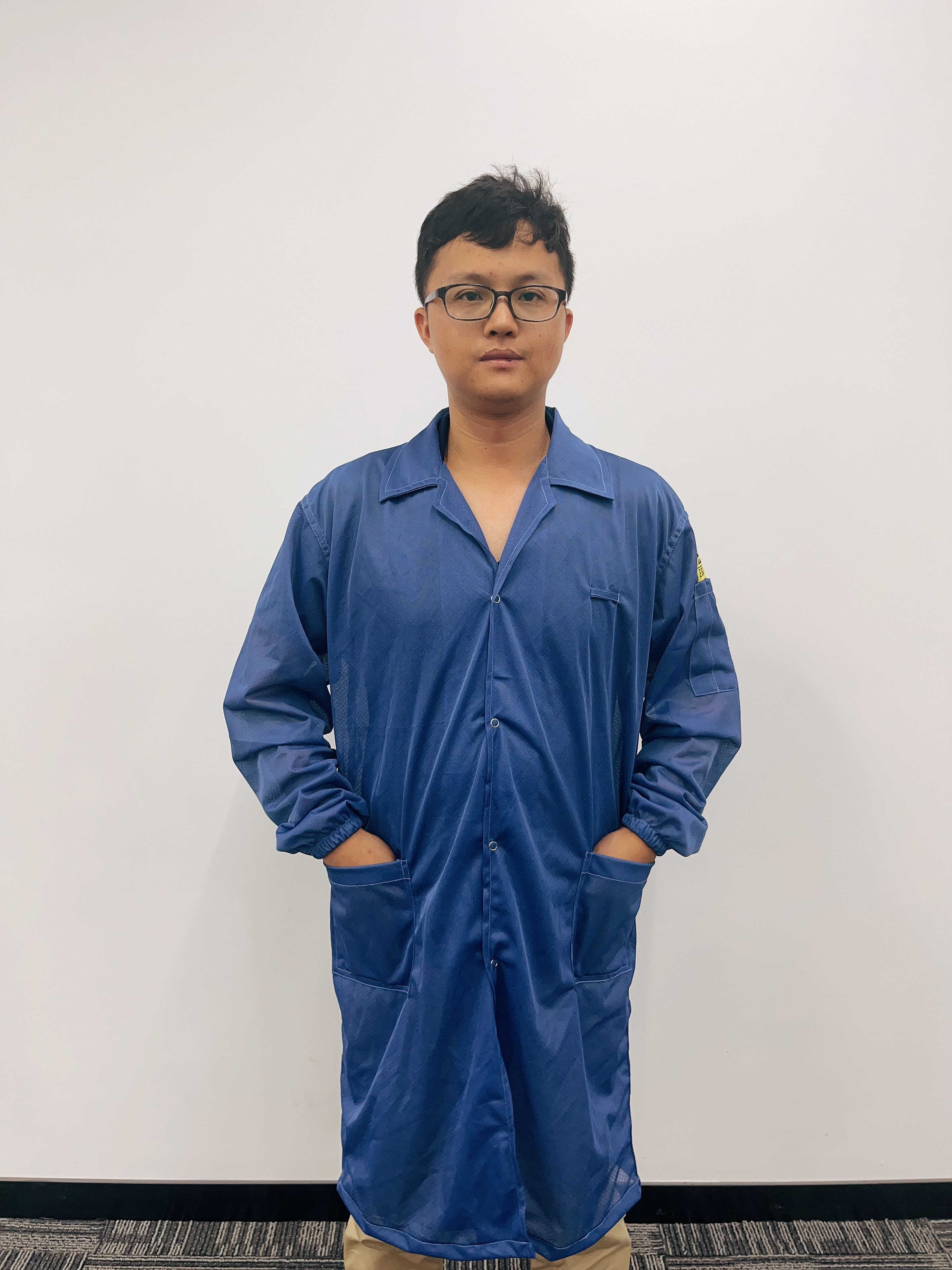First and foremost, the material of an ESD smock is of utmost importance. You should prioritize operator comfort and ESD performance when selecting the material. ESD lab coats are typically made from static dissipative materials to protect against the effects of ESD. The most common materials used are a blend of polyester and cotton embedded with carbon fiber. Carbon fiber is an essential component in ESD lab coats as it provides consistent static dissipation, preventing ESD damage to static sensitive electronics. Synthetic fibers like polyester offer a lighter and more durable option, ensuring a comfortable experience for the wearer. For cooler climates, a cotton polyester blend is a good choice. It is crucial to pay attention to the percentage of carbon fiber or conductive yarn in the lab coat, as a higher percentage results in better anti-static performance.
ESD protection is another essential aspect to consider. Ensure that the lab coats you choose offer sufficient static protection and possess ESD control characteristics such as dissipative, low-charging, ground-able, and shielding properties. These properties guarantee the safety of the wearer and nearby static sensitive components. A good ESD lab coat should meet or exceed the ANSI S20.20 ESD standards for resistance values, conform to the IEC-61340-1-5 International Standard, and comply with RoHS and REACH standards.
When selecting an ESD lab coat, it is essential to choose the appropriate size and length. Most manufacturers offer various sizes and lengths, ranging from small to 4X large. Full-length lab coats, reaching the knees, provide the best coverage. Ensure that the lab coat fits comfortably to allow unrestricted movement during work.
Lab coats come in different styles in terms of collars and cuffs. The most common collar style is the lapel collar, providing better coverage and less exposure to the environment. V-neck collars offer a more open design, suitable for warmer climates. Military collars offer full coverage but may be less comfortable. Collar choice depends on the wearer's sensitivity and comfort requirements. Regarding cuffs, there are snap-fasteners and knit cuffs. Snap cuffs are more affordable and often paired with ESD wrist straps for proper grounding. Knit cuffs, similar to sweatshirt cuffs, allow for hands-free grounding.
If you need extra functionality, lab coats with multiple pockets are recommended. These pockets can conveniently hold small items such as ESD pens and tapes. Make sure the pockets are spacious enough to meet your storage needs.
Finally, if you prefer personalized lab coats, you have the option to request customizations. Different collar types, such as a standing collar for wider coverage, can be chosen. Coats with a knit waist provide a more comfortable fit. Lab coats can also be customized in various colors to match your company's branding or to color code your employees. Embroidering your brand logo on the lab coats' breast pockets can create a unified, corporate look.
I hope this information helps you in selecting the perfect ESD lab coat for your needs. Should you have any further questions or require additional assistance, please feel free to reach out to us.
Thank you for your time and attention.




